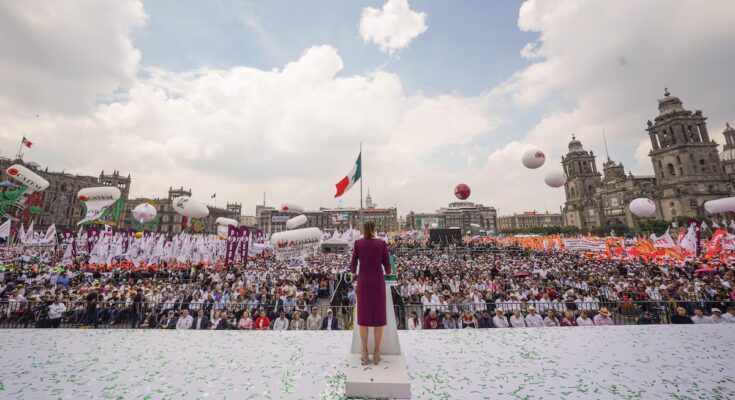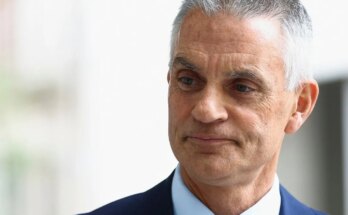The political opposition will emerge from the ranks of this party and in a few years will be able to fight Morena for control of the Mexican state. Who will be the next Cuauhtémoc Cárdenas to lead a dissident current? Who will be the next López Obrador? How many years and how many struggles will it take for those who decide to form a new party to come to power? The Party of the Democratic Revolution (PRD) was created by politicians who had previously been part of the PRI, the latter emerging as an institutional exit from something much larger, more complex and much more popular that cannot really be institutionalized, which, in the key proposed by López Obrador, constituted the third transformation in the life of this country, the Mexican Revolution (the previous creations of the PNR and the PMR can be read as part of the history of the Institutional Revolutionary Party).
The hegemony of the PRI could only be broken by the politicians who created the PRD and many of them, years later, created the National Regeneration Movement party, which in turn integrated into its ranks many recently converted PRI militants, especially local workers. Of the 115 years that have passed since the beginning of the Mexican Revolution, only 12 have been governed by presidents of the National Action Party, a party that has never been considered the heir of the third transformation (to which we must add the almost year and a half of Victoriano Huerta at the head of the government). MORENA, who comes from the PRD and this one from the PRI, discursively takes up revolutionary values and denounces that his predecessors have betrayed these values, especially during the neoliberal period.
With all this, I think that Morena’s existence continues to be an effect of the Mexican Revolution, of the third transformation. Once again, the disorders of the societies and peoples that make up the territory of the country have taken an institutional channel through National Regeneration; Even as the PRI sought to institutionalize the revolutionary movement as much as it could, the collective unrest resulting from the PRI’s neoliberal policies, authoritarianism, and violence were channeled, in large part, toward the creation and rise to power of Morena. Just as not all the revolutionary spirit was captured by the PRI, not all the struggle and resistance to neoliberalism was captured by Morena.
Why is López Obrador’s arrival as president of Mexico not enough to be a Fourth Transformation? A very important element in a major transformation is the profound change with respect to the armed forces, especially the army. One of President Madero’s mistakes was to maintain, to a large extent, the Federal Army inherited from the Porfiriato (remember that Victoriano Huerta was one of the greatest repressors of the Yaqui people under the orders of Porfirio Díaz); It was only with the Treaty of Teoloyucan, in 1914, that the definitive dissolution of the Federal Army occurred, which was then replaced by the Constitutionalist Army. Only then would the Ancien Regime truly end. The Military College was also dissolved until its reopening, having already been purged around 1920.
In this so-called fourth quarter we have not witnessed any break with the armed forces of the neoliberal period; On the contrary, they were strengthened. Former president López Obrador even gave a decoration to General Salvador Cienfuegos, who was defense secretary to neoliberal president Enrique Peña Nieto; Relatives and the movement accompanying the search for justice in the case of the 43 missing students in Ayotzinapa said that Cienfuegos is a key player in clarifying what happened, we know that Cienfuegos knows this.
This emblematic general of the neoliberal period was arrested in the United States accused of links to drug trafficking, although at first López Obrador underlined in his statements that Cienfuegos had been a high official of Peña Nieto, in a change of position he protected him and then exonerated him in Mexico. When López Obrador opened Military Camp 1 to the victims of the Dirty War and they were promised access to the archives of the PRI’s repression to finally learn the truth, at the same event his Secretary of Defense announced that the president of the republic had authorized honoring the fallen soldiers while carrying out their duty in the past. It is clear that Mexico retains the same Army of the Dirty War, the same Army of the neoliberal period, now strengthened by the Morena governments.
Another important feature of the third transformation is the creation of a new constitution like that of 1917. The reforms brought about since 2018, including judicial reform, do not compare in importance and effects of what would be a truly inclusive constitutional convention. The Indigenous Reform, proposed by the indigenous movement, has also suffered significant cuts; the version that the presidency sent to Congress excluded fundamental issues such as the right of indigenous peoples to control their territory and to political representation. Another difference compared to the third transformation concerns the territory, a fundamental issue like few others; With all its errors, the Agrarian Reform brought about a profound structural change. The so-called Q4 did not bring about an equal change, but it is important to recognize that it stopped granting mining concessions, the hectares granted were reduced by 45.3% compared to what was granted by Felipe Calderón and by 20.8% compared to what was granted by Peña Nieto. We continue to hope that the hydraulic invoicing that causes so much damage to the territories will be banned and that the Salinist reform of article 27, which is lethal for ejidal properties, will be cancelled.
With these aspects, among many others that remain to be mentioned, I don’t think we can say that Q4 is the fourth transformation of public life in Mexico; I believe we continue under the effects of the third transformation (I believe there were actually only two); Fortunately, the so-called “revolution of consciences” and Morena’s arrival in power did not cost a million human lives as in the case of the Mexican Revolution, but there were murders and human losses. What must always be remembered is that no political party can fully capture or co-opt the revolutionary desire of the popular classes, nor their ideals, nor their struggles and resistance; no revolution can be truly institutionalized; even if they always try to tell us the opposite.



